I recently discovered a Dance Dance Revolution (DDR) machine tucked away in the basement of Walker Memorial. For a long time, the idea of playing rhythm games felt daunting. With what I perceived as slow reflexes and a general lack of rhythm, I assumed Dance Dance Revolution Games would be far too challenging. However, curiosity finally got the better of me, and I decided to give it a try a couple of weeks ago.
 Dance Dance Revolution arcade game setup with screen and arrow pads
Dance Dance Revolution arcade game setup with screen and arrow pads
What are Dance Dance Revolution Games?
For those unfamiliar, Dance Dance Revolution games are a type of arcade rhythm game developed by Konami. The core gameplay revolves around a platform with four arrow pads: up, down, left, and right. Players select a song from a diverse library, and as the music starts, arrows scroll upwards on the screen. The objective is to step on the corresponding arrow pads when the on-screen arrows align with stationary targets at the top of the screen. Points are awarded based on the accuracy and timing of your steps in sync with the rhythm of the music. When played correctly, Dance Dance Revolution games create a fun and engaging experience where you feel like you are dancing in harmony with the song.
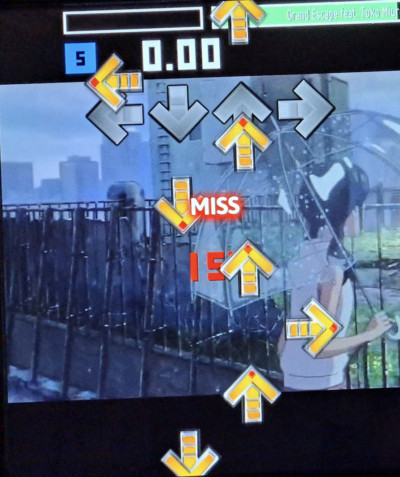 Example of on-screen arrow sequence in Dance Dance Revolution game
Example of on-screen arrow sequence in Dance Dance Revolution game
My First Steps into DDR Gameplay
To my surprise, I found myself enjoying Dance Dance Revolution much more than anticipated. The game’s learning curve is actually quite beginner-friendly and offers a satisfying sense of progression. Within my first hour of playing these captivating dance dance revolution games, I managed to learn several key techniques. I developed the ability to maintain my position on the pads without constantly looking down, relying on a combination of muscle memory and using the support bar for balance. I also improved my timing, shifting my focus from solely visual cues to listening more intently to the song’s audio rhythm. Furthermore, I started to grasp more advanced elements of Dance Dance Revolution games, such as jumps – indicated by simultaneous arrows requiring stepping on two pads at once – and freezes, represented by long arrows that demand holding down a pad for an extended duration.
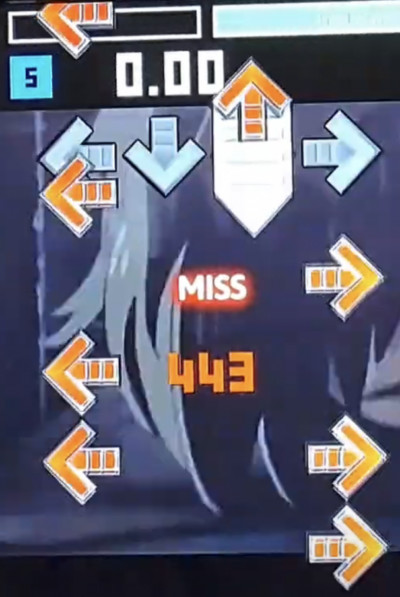 Dance Dance Revolution gameplay sequence showing freeze and jump arrows
Dance Dance Revolution gameplay sequence showing freeze and jump arrows
The “Grand Escape” Challenge
As my second DDR session neared its end, I set my sights on conquering a particular level before my week at MIT concluded. The song was “Grand Escape,” a track prominently featured in Weathering with You, one of my favorite anime films. However, this song proved to be a significant challenge. Each time I attempted “Grand Escape,” I could navigate the first four minutes, which were relatively manageable for a beginner. But then, as the song reached its climax, the screen became overwhelmed with a dense barrage of arrows.
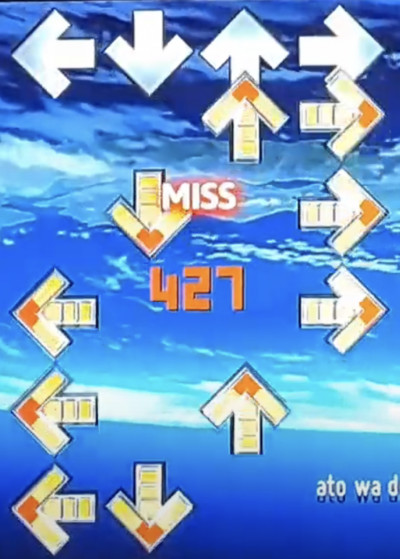 Consecutive jump arrows during the climax of 'Grand Escape' song in Dance Dance Revolution
Consecutive jump arrows during the climax of 'Grand Escape' song in Dance Dance Revolution
While the majority of the song featured perhaps one jump every ten to twenty beats, the climax unleashed a sequence of 27 consecutive jumps. My brain simply couldn’t process two arrows at once, especially at a tempo of 146 bpm, or 2.43 beats per second. Consequently, I consistently failed at the same point in the song.
A Game-Changing Tip: Adjusting Arrow Speed
A few days later, a friend (F) observed my repeated failures with “Grand Escape.” This led to a short but insightful conversation:
F: “I think you should adjust the game settings and increase the on-screen arrow speed.”
Me: “But wouldn’t faster arrows mean less reaction time for each arrow?”
F: “I don’t think your problem is reaction time. I think the issue is screen clutter during the climax. Too many arrows are making it hard to read the patterns. Reducing the clutter might help you process them faster.”
Me: “But doesn’t less on-screen time make it harder to prepare? Wouldn’t I want to see the next few sets of arrows to plan ahead?”
F: “You really shouldn’t need to plan multiple beats in advance in Dance Dance Revolution games.”
Me: “Oh…”
Intrigued, I followed my friend’s advice and increased the arrow speed settings, making them move two to three times faster than before. Here’s a comparison of the same section of the song before and after the speed adjustment:
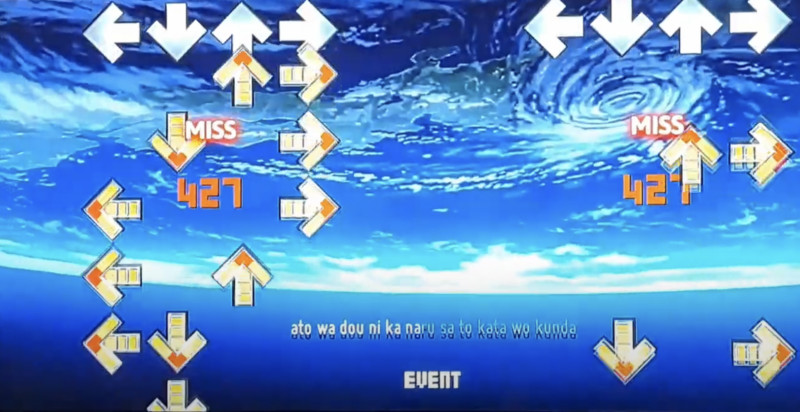 Dance Dance Revolution 'Grand Escape' gameplay comparison: normal speed (left) vs. faster speed (right)
Dance Dance Revolution 'Grand Escape' gameplay comparison: normal speed (left) vs. faster speed (right)
Surprisingly, my friend was right. Even though the faster arrow speed reduced my preparation time for each beat, the decreased screen clutter significantly improved my ability to read the arrow patterns. After a few more attempts, I managed to hit most of the jumps and finally beat the level within these engaging dance dance revolution games.
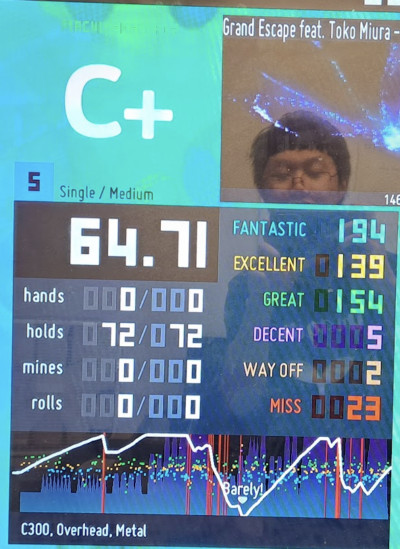 Dance Dance Revolution game cleared screen after beating 'Grand Escape' song
Dance Dance Revolution game cleared screen after beating 'Grand Escape' song
Lessons Learned from Dance Dance Revolution Games
In hindsight, my struggles with Dance Dance Revolution and “Grand Escape” surprisingly mirrored my experiences with anxiety. I was expending so much energy trying to anticipate future steps and over-planning, overloading myself to the point where the mental clutter hindered my focus. When faced with challenges, my instinct was to try even harder to plan and control everything. However, perhaps the solution wasn’t more planning, but rather learning to worry less about the future, declutter my mind, and focus on mastering one step at a time within dance dance revolution games and in life itself.

